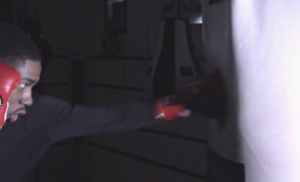
Improving On The Heavy Bag
Heavy bag training is an essential tool for a fighter who aims to get in peak physical condition for a fight. It is possibly the oldest form of training to improve boxing effectiveness and skill, and there’s definitely a reason it’s lasted. for so long. It isn’t good enough to just throw punches with little focus. Though hours are spent on the heavy bag, you shouldn’t have the complacent mindset that wasting hours is okay. Rather, full utilisation of all the hours can set you apart for the rest.
Here are some areas you can focus on and improve on when working the heavy bag to help enhance your skill as much as possible:
Snap the punch:
Don’t push the bag with your punch, snap it. Get your fist to the bag and back to your chin as quick as possible. If the bag is swinging wildly, this may be an indication that your pushing the bag instead of snapping the punch. Many people get caught up in the idea of trying to hit the bag hard, rather than focusing on speed. Speed is power.
Be conscious of distance:
Stand at about just more than a jab’s length from the bag. When you throw the jab, step into it with the lead food and then step back. This is how it would be in a match, you’re never going to just be staying in your opponents punching range. When throwing straight punches, being too close will smother your punches, meaning you cannot get full extension on your straight shots. Consequently, your arm will not effectively transfer all of the momentum, weight and possible power behind the punch.
When throwing hooks and uppercuts however, you want to be close enough to maintain the bend of the elbow and use waist rotation to adequately transfer the power of the shot.
Maintain movement:
Keep moving around the bag, don’t get stuck in the same place for a long time, as this would never happen in a real match. Make sure you consistently move after you punch, whether it be your feet or your head. Boxing is the art of hitting, and not getting hit.
Always maintain your guard:
Just because you’re not going to get hit, it doesn’t mean that you should allow yourself to be complacent. If you drop your guard when at the heavy bag, you make it more likely that in a real match you will suffer fatigue, drop your guard and risk getting punched. This is not a habit you want to get into. Keep your hands up.
Imagine the bag as an opponent:
It’s important to make your training as specific to the actual activity as possible. Visualising the bag will help you to uphold defence and actually help to improve your mental game, which is more important for ring familiarity.
Stay focused:
Don’t punch the bag for a few seconds then walk around or look away. Even when tired, keep your eyes on the bag, with your guard up, chin down and maintain quickness of the feet. Stay on your toes, ready to move in and out. Even when you’re fatigued, keep your body busy and if you really can’t do that, at least keep your mind busy for the entire round. That’s right, every single second.
Think:
Punching the bag is a good opportunity to work on improving mistakes or weak aspects of your game because the punch bag does not hit you back. Rather than being lulled due there being no risk, use this as the perfect opportunity to improve your skills and work on combinations. Refrain from getting reckless or wild. Imagine the bag is your opponent and think about how you’d want to break him down if it were a match.
Final Note
These tips are simple, but essential. Often, champions are the ones that have mastered all of the basics, which then allows them to work at an advanced level. Don’t skip out on ensuring that you have all these bases covered. Many people in training may lack the commitment when working the bag, allowing complacency to set in. Champions however, take every single aspect of training serious and this is what makes the difference. Champions do what the others do not.

Leave a Reply
Be the First to Comment!